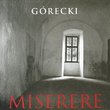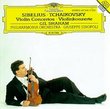| All Artists: Hector Berlioz, John Nelson, Roberto Alagna, Marie-Claire Alain, Orchestre de Paris Title: Berlioz - Te Deum / Alagna, M-C. Alain, Orchestre de Paris, Nelson Members Wishing: 0 Total Copies: 0 Label: EMI Classics Release Date: 4/10/2001 Genre: Classical Style: Opera & Classical Vocal Number of Discs: 1 SwapaCD Credits: 1 UPCs: 724354544927, 724354544958 |
Search - Hector Berlioz, John Nelson, Roberto Alagna :: Berlioz - Te Deum / Alagna, M-C. Alain, Orchestre de Paris, Nelson
 | Hector Berlioz, John Nelson, Roberto Alagna Berlioz - Te Deum / Alagna, M-C. Alain, Orchestre de Paris, Nelson Genre: Classical
|
Larger Image |
CD DetailsSimilarly Requested CDs
|
CD ReviewsNot as keen on Keene Jdaniel1371 | Sacramento, CA United States | 06/09/2001 (5 out of 5 stars) "My first experience with the Te Deum was Abbado's on Lp years ago. I have since lived comfortably with the Delos release featuring Dennis Keene and his augmented Voices of Ascention, recorded live in New York's St. John the Divine with nearly 400 musicians during the Centennial Celebration of the American Guild of Organists in June, 1996. Now I must say that I prefer this new Virgin release featuring John Nelson and Co.Conductor and recording engineer bring out detail on the Virgin release that I just don't hear on the Delos. Though I'm not quite the expert on big organs of the world that I would like to be, I have to say I find Alain's Cavaille-Coll on Virgin to be every bit as earth shaking as the St. John instrument, but-whether fault of conductor, recording, or venue, (St John's is the largest gothic space in the world)-the St. John's on Delos is simply not as penetrating. This is particularly unfortunate for Delos in the final Hymne et Priere as the organ's descending pedal tones under the words "Judex crederis..." can provide for some viscerally thrilling moments. Listen to Virgin's success at this point. (Marie Claire-Alain-you go girl!)In fact, there's a soft-edged quality in the Delos that affects and blurs not only the organ lines, but the choral and orchestral lines as well. Individual lines and colors are much more pronounced on the new Virgin CD. For example, Berlioz plays on the words "Per singulos" (day by day), by repeating the motif over and over again. I find Nelson's incisive approach much more invigorating than the soft-edged Keene, who makes the composer's cleverness at this point sound naïve--a danger in Berlioz. Ironically, I find Nelson's handling of the tender and poetic moments more effective as well. Alagna sings with adequate glow.Speaking of naïve-sounding music, how shall I put it? When listening to Berlioz' "occasional pieces" such as the Te Deum, I would say the more polyphony and color brought out the better. This is what Nelson and his forces seem to successfully achieve. And the children's choir. I haven't heard kids chant so ominously since that poor obese boy met his cruel death in "Lord of the Flies." Listen to them sing "Judex crederis esse venturus." (We believe that thou shalt come to be our Judge) in the final mov't. Very impressive and effective coloring, which went by my ears unnoticed in the Keene.The Virgin/Nelson performance is unique in that it includes some optional music not available on other recordings, as far as I know; though the final "March for the presentation of the colors, with its 12 harps-coming after the "standard finale"-is a little bit too much, even for me." After all this, I am still keener on Keene. Bob Zeidler | Charlton, MA United States | 05/30/2003 (3 out of 5 stars) "Some time back, I wrote a favorable review of the Berlioz Te Deum as performed in New York's Cathedral of St. John the Divine, under forces led by Dennis Keene, with John Aler as the tenor soloist. I said then that the Keene recording, on the Delos label, is an audiophile's delight, as well as a totally idiomatic performance of one of Berlioz's less familiar "ceremonial" or "occasion" works. (For that performance, the occasion was significant enough: The 100th anniversary of the American Guild of Organists.) The editorial reviewer was dismissive of that Keene effort, a point that was not lost on other customer reviewers besides myself, and was quite outspoken about favoring this Nelson recording. Well, this being the Berlioz Bicentennial year, during which I've been spending a fair bit of time listening (and relistening) to Berlioz works as part of the celebration, I thought it a good idea to add the Nelson recording to my Berlioz holdings, if for no other reason than to see what all the fuss was about. By all accounts, this Nelson recording should have been at least the equal of the Keene; all the proper ingredients seemed to be in place. John Nelson is an experienced and sympathetic Berlioz hand. Roberto Alagna may be our finest French tenor today (but the timbre of his voice may well be an acquired taste). Marie-Claire Alain is the French organist non pareil, and she has a marvelous instrument in the Cavaille-Coll organ at the Madeleine Cathedral in Paris. And the Madeleine is certainly a proper cruciform cathedral of more than satisfactory natural reverberance (as is the Cathedral of St. John the Divine, of course). Given all that, my dissatisfaction with this performance set in very early on in the listening process, and subsequently didn't improve measurably. As this editorial reviewer makes clear (in a review that was "borrowed" from the Andante.com website), Berlioz's idea of setting the organ off (and against) the orchestral forces was meant to represent "Pope and Emperor." But the organ - awesome instrument that it is - simply overpowers the forces of the Orchestre de Paris. The effect can be overwhelming, but I doubt this is what Berlioz had in mind; surely he didn't think the Pope to be that much higher than the Emperor that the relative dynamic levels convey. And this is only the beginning of what I take as rather fundamental misbalances in sound level, both between organ and orchestra and within the orchestra as well. My impression of the performance slipped another notch, with the initial exposed entry of the sopranos in the opening "Te Deum" movement, where their ensemble work is sloppy and their intonation hardly of world-class quality. One also begins to hear, here, the sense of less-than-ideal orchestral balance, with generally submerged strings and lower brass relative to the rest of the orchestra. (Most disconcertingly, this balance seems to change from time to time in the work, suggesting that someone may be twiddling knobs in a manner not in the best interests of the music.) Whether one prefers the darker, almost baritonal, voice of Roberto Alagna in the "Te ergo quaesumus" movement to the more conventionally colored tenor of John Aler will be, I suppose, largely a matter of personal taste. I tend to believe that Berlioz had a timbre in mind that is much closer to Aler's than to Alagna's, but there is no disputing the fact that Alagna has the beauty and the authority, and the declamatory power when necessary, for this movement. To me, his voice is an acquired taste in this work; to others, this problem may not exist. Things go awry again, regarding balances and timbres, in the concluding "Judex crederis" movement. For example, the trombones, such an important instrumental choir in the Berlioz orchestra, are anemic; almost unheard. And, toward the end of the movement, when the trombones are called upon to growl out their pedal tones, no one seems to be at home. In the concluding bars, Alain's organ once again is impressive. But it is at the expense of organ-orchestra balance: "The Pope wins! The Pope wins!" By comparison, Keene's "Te Deum" is much better balanced, with neither the organ nor the orchestra overpowering the other (and with them in better tune with each other, often a challenge). Percussion in "Judex crederis" is appropriately dramatic. Choral entrances are spot-on and in-tune. Overall, Keene's Voices of Ascension Orchestra is far better balanced, top to bottom, than is Nelson's Orchestre de Paris, and Keene has a fine sense of Berliozian style, capturing the fleetness of some of the figures that is so characteristic of Berlioz. The sound may appear to be more diffuse than in the Nelson recording, but it is also more natural, without artificial spotlighting. The Te Deum is a relatively short work, running barely 40 minutes. So the question of what is an appropriate filler arises, particularly a filler that can take advantage of the same acoustical space. Keene chose to provide a 20-minute commentary, with examples, about the work, which is fine for the Berlioz newbie but which can wear thin after a hearing or two. Nelson chose to add two rarely-performed emendations set forth by Berlioz "for ceremonial occasions": an instrumental "Prélude" as the third movement, mostly unobtrusive thanks to its relative brevity, and a concluding "Marche" following the "Judex crederis" which comes as a very out-of-place "coda" that destroys the effect that should linger at the conclusion of the work. Scored for multiple harps added to the orchestra, it is Berlioz at his most banal and eccentric, something he probably wished he had never written. My advice, if you plan to add a recording of the Te Deum to your Berlioz library as part of the bicentennial celebration (or simply because you want a version of the work), remains that you acquire the Keene performance. Bob Zeidler" Strange sonic effects, decent orchestra, dodgy vocals sphaerenklang | UK | 11/14/2002 (3 out of 5 stars) "The sound of this recording is at first hearing very impressive - full and bright, with plenty of bass, especially from the organ, and plenty of expansion at the climaxes. But there are balance problems and, worse, every time the choir sings the letter "s" the sibilance jumps out at you like a snake - Te Deum Laudamusss. The effect is really weird, as if they had a choir composed entirely of people with bad lisps. To make it worse they are rather sloppy with their "s"'s, smearing them out rather than taking them cleanly and quickly (which should be absolutely basic choral technique). Thiss leadss me to ssusspect that the production team did some messing around with the high frequencies, maybe boosting them to get a brighter sound but with this unwanted side-effect. Whatever caused it, it's very distracting.
The balance problems include extremely distant strings - in the first movement you essentially can't hear the violins. This is a shame because they add a lot to the varying textures of the music, as I discovered listening to the Abbado - and dominant brass and organ. If you want the organ to make the same amount of noise as the 80-piece orchestra, then fine, but I think the idea was for the organ to be an extra colour, blended and balanced within the orchestral texture, or a sort of echo, rather than a muscle-bound competitor. Even in the quieter passages the organ bass tends to boom. The quality of the orchestral playing is very fine, but with the unequal recording the sound lacks depth, tending towards being "all on the surface". It also sounds as if the recording was made in a very resonant acoustic, since in the quieter passages the instruments and voices are somehow suspended in a sea of echoes, rather than having a clear focus. This sort of acoustic would be great for, say, a capella choral music or Gregorian chant, but tends to make Berlioz' vigorous orchestral accents into broad splurges. The choir leaves a certain amount to be desired: the men, to be frank, sound like teenagers, with a strained, nasal and ill-supported timbre which doesn't blend (maybe this is the "French choir sound?"), and the women are noticeably flat in their exposed lines in the "Tibi Omnes". You can't hear this in Amazon's excerpts since they cunningly cut off just at the end of the orchestral introductions! However, in the louder tutti sections these defects are not so noticeable. The children are excellent. I can just about stomach Alagna's solo - if this is bel canto, give me can belto any day. His tone quality is extremely uneven: half the time he seems in danger of turning into a baritone, half the time trying to be Pavarotti. While such variegation of colour might be appropriate for a melodramatic opera scene, Berlioz' solo with its long phrasing requires a simpler and less fervid approach. With Alagna, by the end of a phrase you and the music are exhausted by the sheer amount of "expression" he puts in. Araiza for Abbado has a steadier tone and is much less indulgent. Again, all you can hear in Amazon's "sample" is the orchestral introduction - not much use. Unfortunately the Abbado/DG version, which is in good digital sound and is a great overall interpretation, isn't available in the US: I got it from amazon.co.uk. Abbado's superb opera and orchestral conducting are evident and he treats the piece as a coherent whole, with an almost narrative flow, rather than a set of sonic showpieces interspersed with pious arias. The slow contemplative movements under Nelson tend to drag, which may have contributed to the sopranos' pitch problems; with Abbado they have direction." |

 Track Listings (8) - Disc #1
Track Listings (8) - Disc #1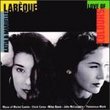
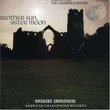


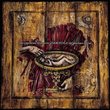
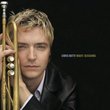

![Across The Universe [Deluxe Edition]](https://nationalbookswap.com/cd//m/51/1251/1241251.jpg)
